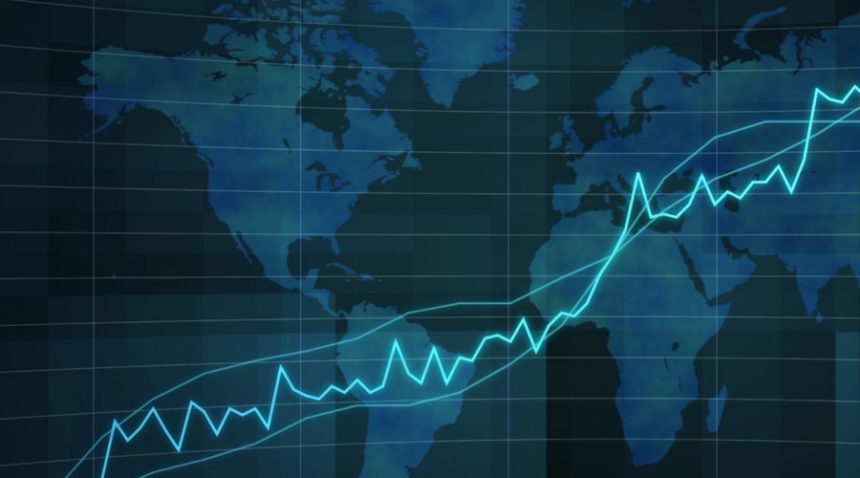Global Inflation in 2025: Is the Crisis Fading or Far from Over
The global economy in 2025 finds itself navigating a landscape of potential inflationary pressures. This phenomenon seeped into day-to-day lives and global institutions alike. The rising costs of essential goods and services, paired with the erosion of purchasing power, necessitate a comprehensive understanding of the underlying factors driving these trends.
This article explores and analyzes global inflation trends, examining their multifaceted nature and the diverse impacts across various regions. We will delve into the latest data, explore the key drivers, and assess the potential future trajectories of this critical economic indicator.
What is Inflation
Inflation is the rate at which the general level of prices for goods and services is rising, and, subsequently, purchasing power is falling. It is a fundamental economic metric that reflects the erosion of a currency’s value over time. When inflation is high, consumers find that their money buys less, impacting their spending habits and overall economic activities.
Key Factors Driving Inflation in 2025
Supply Chain Recovery: While easing, lingering bottlenecks, especially in high-tech sectors, continue to drive up prices.
Labor Shortages: Resulting in higher wages, particularly in healthcare and education, pushing up service costs.
Energy Price Volatility: Despite recent stabilization, fluctuations impact manufacturing and transportation.
Persistent Housing Demand: Outstripping supply, keeping real estate prices elevated, especially in urban areas.
Climate Change Impacts: This leads to an increased frequency of extreme weather events and disrupts food supply chains.
Monetary Policy Adjustments: Central bank rate hikes aimed at cooling down overheated sectors.
Geopolitical Tensions: Disrupting global trade, particularly in energy and essential materials.
Shifting Consumer Behavior: Post-pandemic changes in spending patterns, favoring experiences over certain goods.
Digital Economy Integration: Introducing new costs in infrastructure and cybersecurity, affecting service prices.
Global Trade Restrictions: Increasing global inflation due to tariffs and other trade barriers.
Regional inflation disparities and economic shifts
Following the disruptions of the pandemic, 2024 witnessed a gradual moderation of inflationary pressures, with the global inflation rate settling around 4.6%, a notable decrease from the 6.4% recorded in 2023. This easing can be attributed to the stabilization of supply chains and reduced commodity costs. However, while encouraging, these figures obscure the stark regional disparities that persist.
Developed economies, such as the United States and those within Europe, have experienced a relative slowdown, with average inflation rates hovering around 3.5% in 2024. This moderation is a testament to the efficacy of aggressive interest rate hikes and strategic government interventions. Conversely, developing nations continue to grapple with elevated inflation, with rates reaching 8.2% across Africa, a region plagued by supply disruptions and currency volatility. Asia-Pacific economies, displaying remarkable resilience, maintain an average inflation rate of 2.8%, with China’s strategic price controls and India’s moderate inflation contributing to this stability.
United States: A Case Study in Inflation Management
The United States provides a compelling case study in inflation management. Following a dramatic surge to 8.6% in 2022, the highest in four decades, the nation has witnessed a gradual decline, with 2024 inflation rates stabilizing at 3.1%. This downward trajectory is a direct consequence of the Federal Reserve’s aggressive monetary policy, which raised interest rates from 0.25% in 2021 to 5.25% by 2023.
However, the picture is not without its complexities. Core inflation, which excludes volatile food and energy prices, remains stubbornly high at 3.7%, signaling persistent price increases in sectors such as housing and healthcare. Shelter costs, in particular, contribute roughly 40% of the total U.S. inflation rate, highlighting the challenges of managing inflation in a dynamic real estate market.
India: Navigating Unique Inflation Challenges
India’s economic survey of 2024-2025 provides crucial insights into the nation’s specific inflation challenges. The Consumer Food Price Index (CFPI) rose from 7.5% in FY24 to 8.4% in FY25 (April-December), driven primarily by vegetables and pulses. This surge underscores the vulnerability of India’s food supply to seasonal variations and external shocks.
Retail inflation, measured by the Consumer Price Index (CPI), averaged 5.4% during FY25 (April-December). While within the Reserve Bank of India’s (RBI) upper tolerance level, it exceeded the central bank’s comfort zone of 4%. Food inflation, particularly, surpassed 8% at several points, largely due to supply disruptions affecting essential commodities like onions, tomatoes, and pulses. Extreme weather events have significantly impacted agricultural output, with a 15% increase in crop area damage over the past three years due to erratic weather.
While core inflation has eased, service-related inflation in housing, healthcare, and education continues to rise. Housing rents have increased by 12%, while healthcare expenses rose by 6.5%, attributed to strong urban demand, wage growth, and supply chain disruptions. The concentration of inflation in specific food items highlights the need for targeted interventions to stabilize prices and mitigate the impact on vulnerable populations.
Inflation in Latin America, Japan, and beyond
Significant regional disparities characterize the global inflation scenario. In Latin America, inflation rates hover around 7.9%, driven by currency devaluations and political instability. In contrast, Japan maintains a remarkably low inflation rate of 1.6%, a testament to its longstanding economic policies.
Furthermore, several emerging trends are reshaping the global inflation narrative. Climate change, with its increasing frequency of extreme weather events, is disrupting agricultural supply chains, leading to price hikes in essential commodities. Geopolitical tensions, particularly in Eastern Europe, are exacerbating energy price volatility and trade disruptions.
Navigating the Future: Policy Responses and Economic Projections
Central banks worldwide are adopting a cautious approach to monetary policy, balancing the need to curb inflation with the imperative to foster economic growth. The Federal Reserve’s continued commitment to rate hikes, albeit with a data-dependent approach, signals a determination to anchor inflation expectations.
Looking ahead to 2025, economic projections suggest continuing global inflation moderation. Panelists’ CPI expectations indicate that 2025 inflation will average lower than the 2024 CPI inflation rate, though the slowdown will be softer than in 2024 vs. 2023. Lower prices for food and energy will keep a lid on prices in 2025, though more global trade restrictions will prop up inflation.
However, the journey towards price stability is fraught with uncertainties. Geopolitical risks, climate-related disruptions, and potential supply chain vulnerabilities could derail the current trajectory. Therefore, a proactive and adaptive policy framework is essential to navigate the complexities of the global economy.
Conclusion
Global inflation trends in 2025 reflect a complex interplay of economic forces. While progress has been made in moderated price pressures, vigilance remains paramount. By fostering international cooperation, implementing sound monetary policies, and investing in resilient infrastructure, nations can navigate the challenges of inflation and build a foundation for sustainable economic growth.






